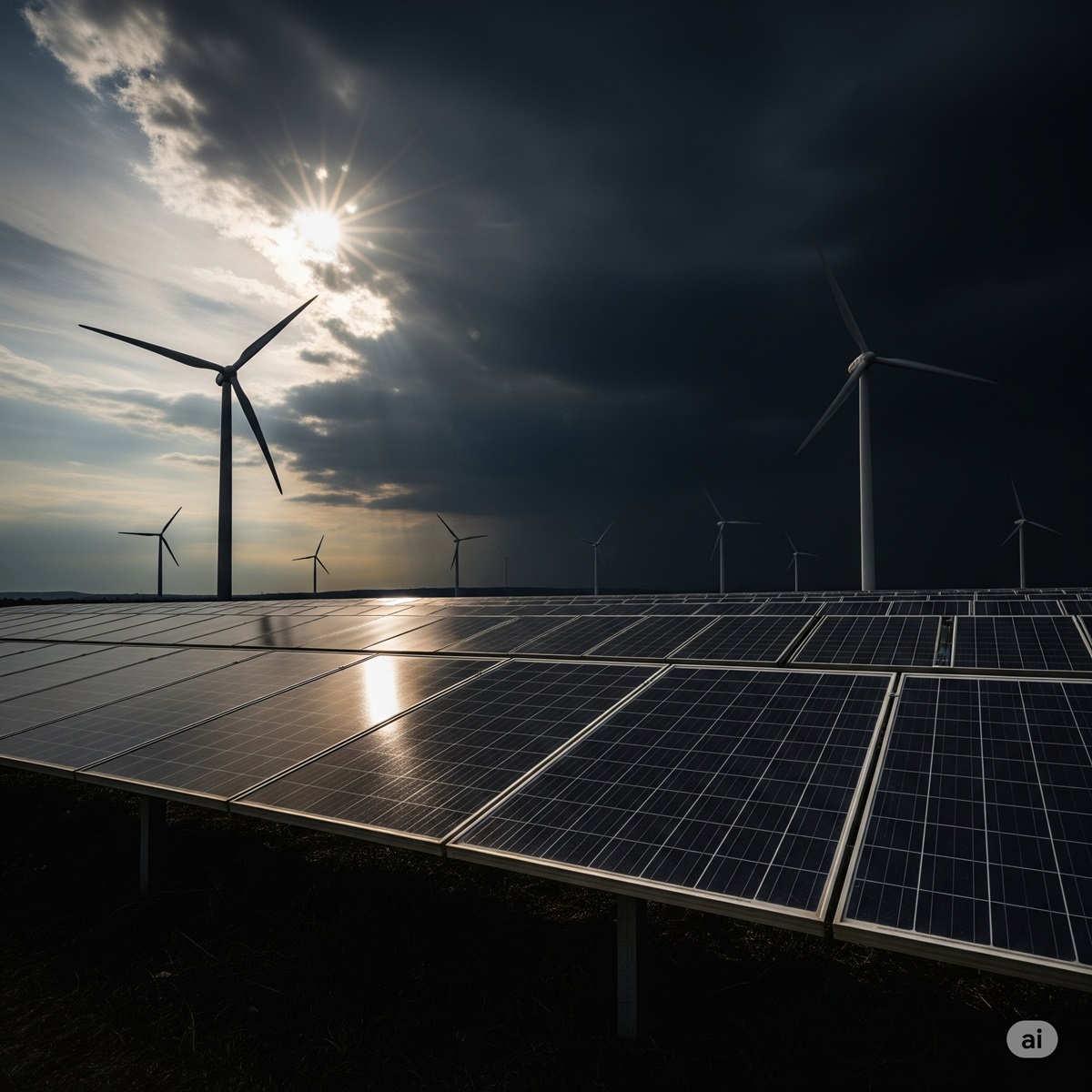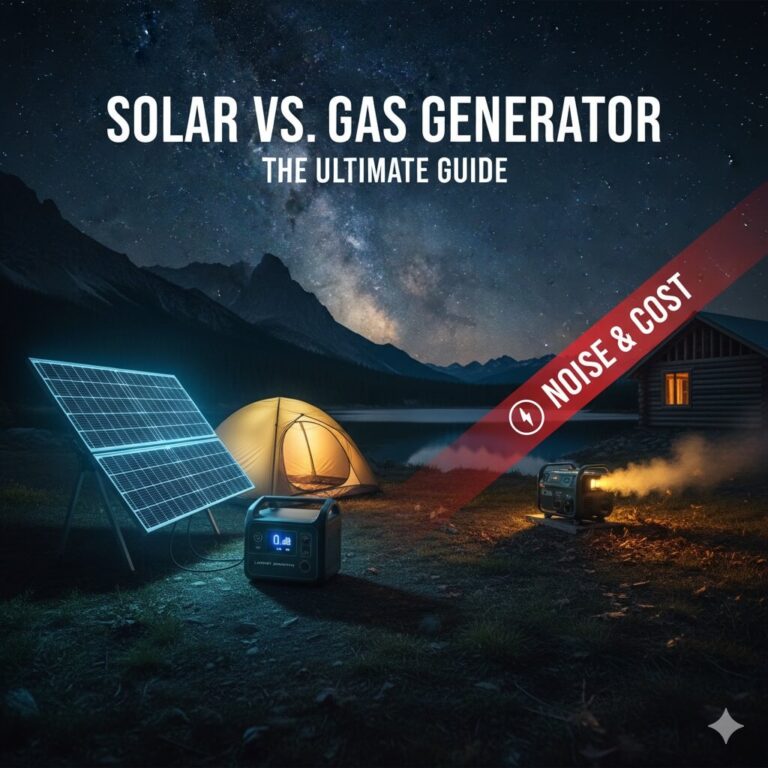Clean Energy Jobs at Risk: Senate Budget Cuts Threaten 300,000+ US Solar & Wind Employment

The American clean energy sector has been booming. From bustling factories churning out solar panels to vast wind farms sprouting across the landscape, this industry has rapidly become a significant engine of job creation and economic growth. Fueled by recent policy support, it promised a sustainable future, both environmentally and economically. However, a dark cloud now looms on this vibrant horizon. A new US Senate budget bill proposal threatens to abruptly roll back critical incentives for solar and wind energy, putting hundreds of thousands of clean energy jobs at risk, along with jeopardizing billions in investment and the nation’s ambitious clean energy future.
This article will delve into the specifics of these proposed cuts, quantify the projected job losses, examine the broader economic ripple effect (especially on nascent American manufacturing), highlight the widespread opposition from industry leaders, bipartisan local officials, and even some unexpected political figures, and discuss the profound implications for America’s energy transition and the wallets of everyday consumers.
- 1. A Foundation Under Threat: The Booming US Clean Energy Sector
- 2. The Axe Falls: What’s in the Senate Budget Bill for Renewables?
- 3. Alarming Projections: Hundreds of Thousands of Clean Energy Jobs on the Line
- 4. Beyond the Numbers: The Broader Economic Ripple Effect
- 5. A Bipartisan Alarm: Industry, Mayors, and Republicans Speak Out
- 6. The Stakes for America’s Energy Future: Higher Costs, Slower Transition
- Conclusion: Protecting American Jobs and Our Clean Energy Future
- Frequently Asked Questions (FAQs) About Clean Energy Job Cuts
- Q1: Which clean energy incentives is the US Senate proposing to cut?
- Q2: How many clean energy jobs are at risk due to the Senate budget bill?
- Q3: How will these cuts impact my electricity bill or ability to get solar panels/EVs?
- Q4: Are these job losses only in “blue states,” or are “red states” also affected?
- Q5: What are industry leaders and mayors saying about these proposed clean energy cuts?
1. A Foundation Under Threat: The Booming US Clean Energy Sector
For years, the narrative around renewable energy in the United States was one of potential. Today, that potential is a powerful reality. The sector has become a vital source of employment and innovation, particularly since the passage of supportive legislation like the 2022 Inflation Reduction Act (IRA).
Consider the numbers:
- In 2023 alone, the U.S. added a staggering 149,000 clean energy jobs, growing at more than double the rate of the overall economy.
- The solar sector, a cornerstone of this growth, supported 279,447 jobs as of December 2023, adding over 15,000 new positions in just one year. This growth wasn’t confined to specific regions, with 47 states reporting gains, led by Florida, Texas, Arizona, and Nevada.
- The IRA supercharged investment, catalyzing $115 billion in actual investments in US-based clean energy and transportation manufacturing from Q3 2022 to Q1 2025. This surge has led to the announcement of 380 new clean tech manufacturing facilities, with 161 already operational.
- Collectively, solar and wind accounted for a record 17% of total U.S. electricity generation in 2024, demonstrating their increasingly central role in the national energy mix.
This unprecedented growth has built a robust foundation of American manufacturing jobs and expertise, transforming communities and offering pathways to well-paying careers. However, this hard-won progress now stands on the brink.
2. The Axe Falls: What’s in the Senate Budget Bill for Renewables?
The proposed draft bill from the US Senate tax committee, led by Republican Senator Mike Crapo, outlines aggressive measures that could severely undermine this clean energy momentum.
The core of the proposal is a full phase-out of vital tax credits for solar and wind energy by 2028:
- The phase-out would begin in 2026, reducing the incentive to 60% of its current value.
- It would further decrease to 20% in 2027 and then be fully eliminated by 2028.
This contrasts sharply with the treatment of other energy sources. The draft bill paradoxically extends 100% of tax credits for hydropower, nuclear, and geothermal facilities until 2033, phasing them out by 2036—sources often favored by the Trump administration.
Beyond solar and wind, the proposed budget bill includes cuts to other clean energy incentives:
- A reduced subsidy for Sustainable Aviation Fuel (SAF) compared to road fuels.
- A complete phase-out of hydrogen incentives.
- A phase-out of critical credits for residential energy efficiency improvements (e.g., heat pumps, efficient windows, home solar panels under Section 25D, and batteries) after 2025.
- The complete elimination of the popular $7,500 consumer tax credit for electric vehicles (EVs) purchased 180 or more days after the bill’s enactment.
While the Senate language is slightly more lenient than the House’s “One Big Beautiful Bill Act” (OBBBA) in terms of project timelines, it still retains restrictive language against using tax credits for projects reliant on equipment or critical minerals from “foreign adversary nations” like China. Overall, analysts estimate the House bill alone could halt roughly $522 billion in investments approved under the IRA.
3. Alarming Projections: Hundreds of Thousands of Clean Energy Jobs on the Line
The implications of these proposed cuts are not theoretical; they translate directly into job losses and economic contraction, threatening to roll back years of progress. Industry leaders are sounding a clear, urgent alarm.
- The Solar Energy Industries Association (SEIA) warns that the bill could jeopardize nearly 300,000 solar and storage jobs across the country. This includes risking the viability of 287 to 331 solar and storage factories that are currently operational or planned.
- By 2030, SEIA projects that up to $220 billion in clean energy investment could be lost, a figure that some analyses place even higher at $286 billion in local investment.
- The removal of the residential solar credit (25D) alone, a key incentive for rooftop solar adoption, could result in 75,000-85,000 fewer jobs by 2026, potentially escalating to 250,000 fewer jobs by 2028.
- The BlueGreen Alliance, focusing on the broader manufacturing footprint, estimates that the proposed House bill alone puts over 2 million jobs at risk across the manufacturing employment footprint, including nearly 300,000 direct manufacturing jobs in clean energy facilities and over 1 million indirect jobs down the supply chain.
These aren’t just abstract figures; they represent livelihoods, careers, and the future of American workers.
4. Beyond the Numbers: The Broader Economic Ripple Effect
The direct job losses only tell part of the story. The proposed budget cuts could trigger a cascading economic ripple effect, undermining burgeoning American manufacturing jobs, eroding national competitiveness, and impacting local communities.
- Threat to US Manufacturing Renaissance: The IRA sparked a genuine renaissance in American manufacturing jobs for solar panels, batteries, and wind turbine components. This legislation risks snuffing out this growth. Already, $14 billion worth of new factories and projects have been cancelled or postponed due to uncertainty over the House bill. States like New Mexico, Nevada, Georgia, Arizona, Kentucky, Michigan, South Carolina, Tennessee, and West Virginia—many of which voted for President Trump—have significant existing or planned clean energy manufacturing operations that now face an uncertain future without these crucial tax credits.
- Loss of US Competitiveness: By scaling back incentives, the U.S. risks ceding its competitive edge in the rapidly expanding global clean tech market to rivals like China, who are heavily investing in these very industries. This jeopardizes America’s long-term economic and technological leadership.
- Local Economic Devastation: The closure of factories and the loss of construction jobs would directly impact local economies, reducing tax revenues, decreasing consumer spending, and destabilizing the small businesses that support these industries. A report for New York, for example, estimated repealing incentives could cause the state to lose up to 20,300 jobs and nearly a $3.5 billion hit to its GDP.
- Supply Chain Disruptions: The impacts would reverberate throughout the clean energy supply chain, affecting raw material suppliers, logistics providers, and various service companies that support renewable energy projects.
5. A Bipartisan Alarm: Industry, Mayors, and Republicans Speak Out
The concern over these proposed cuts transcends traditional political divides, with a diverse coalition raising alarm bells.
- Industry Outcry: Major industry associations like SEIA and the American Clean Power Association (ACP) are lobbying aggressively, issuing dire public warnings about the catastrophic consequences for investment and job growth.
- Bipartisan Mayoral Coalition: A significant display of local opposition comes from a bipartisan coalition of 175 mayors from 45 states. These local leaders are actively lobbying Congress to preserve the tax credits, emphasizing the concrete job creation and investment benefits their communities stand to lose.
- Republican Reservations: Importantly, the opposition isn’t uniform within the Republican Party. A handful of Republican senators, including Lisa Murkowski (Alaska), John Curtis (Utah), Thom Tillis (North Carolina), and Jerry Moran (Kansas), along with 13 House Republicans, have publicly cautioned against a “full-scale repeal.” They highlight concerns about job certainty for businesses and the protection of existing and planned investments in their states, many of which are traditionally “red states” benefiting significantly from clean energy development.
- Political Battle Ahead: The Senate draft is merely a proposal, and its final form will be the result of intense negotiation. House Speaker Mike Johnson has already indicated he would oppose the bill if the Senate “waters down” the clean energy rollbacks, setting the stage for a contentious legislative battle.
6. The Stakes for America’s Energy Future: Higher Costs, Slower Transition
Beyond jobs and economic impact, the proposed budget cuts carry profound implications for America’s energy security, grid reliability, and the cost of electricity for every household and business.
- Higher Energy Costs for Consumers: A premature termination of tax credits would inevitably slow the deployment of new solar and wind capacity, reducing supply and increasing reliance on more expensive and polluting fossil fuels. Analysts warn this could lead to higher electricity prices for households (e.g., a 7% increase by 2026, potentially $95-$290 more annually by 2035) and businesses (7-12% for industrial consumers). Princeton University modeling suggests electricity bills could rise by an average of $415 per year by 2035, while Arizona residents could face an additional $775 million annually by 2030.
- Grid Reliability Concerns: Reduced clean power additions could strain grid reliability, especially as electricity demand continues to grow. This would necessitate running more costly and polluting fossil fuel generation to meet peak demand, increasing the threat of power outages and energy shortfalls.
- Jeopardizing Climate Goals: The cuts directly undermine the pace of decarbonization, making it significantly harder for the U.S. to meet its national and international climate commitments.
- Increased Pollution & Health Costs: Fewer clean energy projects mean continued reliance on fossil fuels, leading to increased air and climate pollution. Studies project this could result in significant public health costs, including up to $130 billion in health damages and 22,800 premature deaths.
Conclusion: Protecting American Jobs and Our Clean Energy Future
The US Senate budget bill proposal, with its proposed solar and wind tax credit cuts, represents a severe threat to the thriving clean energy jobs sector in the United States. It jeopardizes hundreds of thousands of jobs, billions in investment, and the nation’s leadership in a critical global industry.
This is not merely an environmental issue or a concern for specific political demographics; it’s a direct threat to American manufacturing jobs and local economies across the political spectrum. It risks undermining the nation’s industrial strength and competitiveness against rivals like China in the global clean energy race. The broad, bipartisan concern from industry leaders, local mayors, and even within the Republican ranks underscores the gravity of the situation.
The time to act and protect these vital American jobs is now. We urge readers to understand the profound implications of these proposed cuts. Engage with your elected officials, support industry advocacy groups, and share this information. By doing so, we can help ensure a robust, resilient, and job-rich clean energy future for the United States, safeguarding both our economy and our environment.
Frequently Asked Questions (FAQs) About Clean Energy Job Cuts
Q1: Which clean energy incentives is the US Senate proposing to cut?
A: The US Senate budget bill proposes to fully phase out tax credits for solar and wind energy by 2028. It also includes cuts to hydrogen incentives, residential energy efficiency credits, and the EV consumer tax credit.
Q2: How many clean energy jobs are at risk due to the Senate budget bill?
A: Industry estimates, like those from SEIA, warn that nearly 300,000 solar and storage jobs are at risk, with potential losses reaching 2 million jobs across the broader clean energy manufacturing footprint.
Q3: How will these cuts impact my electricity bill or ability to get solar panels/EVs?
A: If enacted, these cuts could lead to higher electricity bills for consumers (potentially hundreds of dollars more annually) and eliminate crucial tax credits that make adopting home solar panels, heat pumps, and electric vehicles more affordable.
Q4: Are these job losses only in “blue states,” or are “red states” also affected?
A: These proposed cuts threaten jobs across the entire country, including a significant number of American manufacturing jobs in “red states” that have seen recent investments in clean energy factories and projects. A bipartisan coalition of mayors from 45 states is actively lobbying against the cuts.
Q5: What are industry leaders and mayors saying about these proposed clean energy cuts?
A: Industry leaders like SEIA and ACP are issuing dire warnings about job losses and investment setbacks. A coalition of 175 mayors is lobbying Congress to preserve the credits, citing local economic impacts. Even some Republican lawmakers have expressed concerns about job protection and investment certainty in their states.



